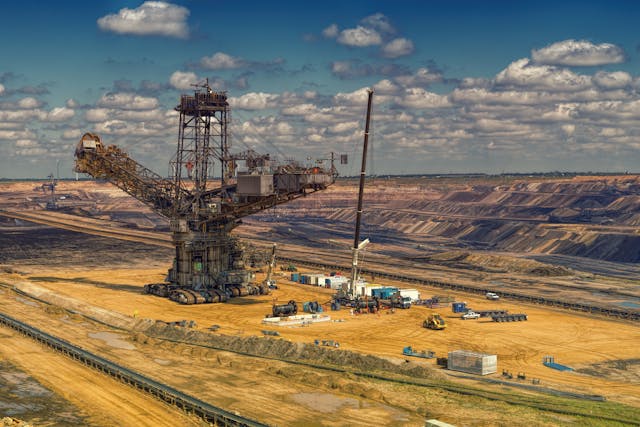As your business begins to grow, your equipment requirements shift. The tools and machines that were doing the job once may start to hold up progress or fail to meet new demands. That’s when you need to take a step back and ask yourself: Should you replace what you have or invest in something new?
Making smart decisions about heavy equipment isn’t merely about managing ongoing work. It’s about preparing for long-term expansion without over expenditure. Whether you’re in construction, agriculture, manufacturing, or logistics, the right equipment investment can determine how smoothly and efficiently your company operates.
Let’s discuss how to approach equipment investments in a manner that truly benefits your growth, without waste.
Article Breakdown
Build an Effective Equipment Planning Strategy
Prior to purchasing anything, step back and plan intentionally. A few smart moves upfront can save you money and headaches down the road.
Here’s how to do it:
- Confer with your short- and long-term objectives: Are you taking on larger projects? Venturing into new markets? Adding more employees? Your equipment requirements should align with your plans for growth.
- Prioritize must-have vs. nice-to-have tools: Determine which equipment is absolutely necessary for day-to-day use and which ones can be delayed.
- Plan ahead, at least 6 to 12 months: If your workload is likely to increase, it’s wiser to get prepared now than panic later.
- Seek feedback from your staff: Those who operate the equipment on a daily basis can provide unique information regarding what is effective, what requires enhancement, and what will facilitate their work or enhance safety.
Upgrades That Provide the Best Value for Money
When expanding, companies think about upgrading their equipment, and full replacements usually come to mind. But often, small strategic enhancements can produce big dividends. One of the examples is the hydraulic cylinder, a critical part that goes into everything from agricultural and construction equipment to warehouse equipment.
Replacing this component can enhance lifting strength, handling, and machine performance overall without the expense of buying a whole unit. It’s a savvy investment for companies that use heavy equipment on a daily basis. To achieve optimal results, it pays to order these upgrades from reputable sites that deal in long-lasting, high-standard components.
A good supplier not only provides improved quality but also contributes to minimizing the risk of breakdowns and delays. These considerate upgrades pay big dividends in aiding your business to grow, keeping operations running smoothly, and minimizing downtime.
Prioritize Versatility and Durability
When budgets are tight and choices count, flexibility is your ally. Seek out equipment that serves more than one purpose. A multi-purpose loader, a versatile machine with simple-to-switch attachments, or a tool that serves several departments can provide greater value than highly specialized equipment.
Reliability is equally critical. You need machines and components that will stand the test of time, particularly if your business is building momentum.
Here’s what to seek out:
- Multi-tool devices that can perform many tasks
- Interchangeable components or add-ons to adjust to shifting demands
- Construction that is built to withstand frequent wear and tear
- Favorable customer feedback that indicates extended use
- Warranty from the manufacturer in the event of a malfunction
Investing a bit more initially in something that works well and endures longer is a better decision than saving some money today and suffering with continual breakdowns down the road.
Don’t Ignore the Total Cost of Ownership (TCO)
A machine’s price tag might look good at first glance, but what will it really cost you over time? That’s where total cost of ownership (TCO) comes in. This includes the upfront cost, fuel consumption, repair needs, availability of parts, and how often it needs servicing.
Oftentimes, a lower-priced machine will be more costly in the end since it requires constant repairs, consumes a lot of fuel, or doesn’t withstand routine use. A bit pricier one that requires little maintenance and for which spare parts are readily available can usually prove the better long-term option.
The same principle applies to downtime. A machine that fails during a peak season can result in missed deadlines, unhappy customers, and lost revenue. Advance planning saves you all this headache.
Consider Pre-Owned and Financing Options
Not all wise investments imply new equipment. Pre-owned equipment from proven sellers can save you a fortune, particularly if you’re just starting a new phase of expansion.
Here’s how to get the best of it:
- Seek certified or inspected used equipment with a maintenance record
- Request warranties or service agreements for your peace of mind
- Lease vs. finance — compare to maintain a healthy cash flow
- Don’t make deals that sound too good to be true
- Know the fine print, such as interest charges, down payments, and long-term expenses
The aim is to acquire high-performing machinery without stressing your finances.
Final Thoughts
As your company expands, there will be plenty of choices to be made. One of the most crucial ones is investing in the right machinery. But intelligent investments don’t necessarily equal spending more; they equal spending intelligently.
Start with a solid plan, focus on upgrades that bring real value, and choose reliable suppliers who’ve got your back. By making thoughtful equipment decisions today, you’re building a stronger, more efficient operation for tomorrow.



